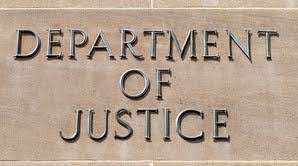Goldman Sachs’ Lucrative and Wide-Ranging Corrupt Scheme (Part II of III)

Goldman Sachs now sits atop all charts with the largest US FCPA bribery penalty, totaling approximately $2.9 billion. The second largest is Ericsson’s 2019 FCPA settlement for $1 billion.
There is a reason that Goldman “earned” this distinction. The bribery scheme and controls and compliance failures are repugnant and pervasive. Goldman’s corruption scheme was built on stealing funds from the 1MDB account that was intended to benefit the Malaysia public. This was a scheme that truly can be characterized as robbing from the public for the benefit of a small group of corrupt government officials, Goldman and a number of bad actors. Goldman’s conduct is a horrible example of the dangers and cost of corruption to developing countries such as Malaysia.
The scheme was executed by former Goldman senior executives and Jho Low, who authorized and arranged bribes and kickbacks to government officials in Malaysia and the Emirate of Abu Dhabai to secure lucrative business for Goldman and funds for the personal benefit of the scheme participants.
Jho Low, a Malaysian national, had close ties with Malaysian government officials, including Malaysia’s then President, Najib Razak, and was the key intermediary for 1MDB in connection with the financial transactions involving Goldman Sachs. Low had a reputation for corruption, and prior involvement in bribery. Leissner and Ng coordinated efforts to conceal Low’s involvement int the transactions that he arranged for Goldman.
Between 2009 and 2014, Goldman executives and Low diverted approximately $6.5 billion in capital that 1MDB raised in 2012 and 2013 through three bond offerings. Goldman Sachs earned approximately $600 million in fees from the bond offerings.
Goldman Internal Due Diligence and Transaction Review

Goldman had an anti-corruption policy and related procedures that prohibited improper payments to government officials. Goldman’s compliance function (“Compliance Group”) and its Business intelligence Group (“Intelligence Group”) were responsible for enforcing Goldman’s anti-corruption policy and procedures.
To ensure compliance with policies and financial controls, Goldman maintained a committee review process. Compliance and Intelligence Group representatives attended these committee meetings and participated in the review process. Goldman’s Capital Committee was responsible for review of Goldman’s role in the 1MDB bond offerings.
Jho Low’s Priori Relationship with Goldman
Between 2009 and 2011, Leissner and Ng attempted on three occasions to onboard Jho Low as a Goldman client and intermediary. Leissner and Ng viewed Jho Low as a potential source of business from 1MDB and other businesses. Goldman’s Compliance and Intelligence Groups rejected attempts to onboard Jho Low as a client, based in part on Low’s unexplained source of wealth.
In 2011, for example, Leissner and Ng’s attempted to secure approval to advise a business controlled by Low. Goldman’s Intelligence Group rejected the opportunity because of Low’s shady reputation and unexplained source of wealth.
Despite the rejection of Low as a client and other engagements, Leissner, Ng and another senior executive continued to do business with Jho Low, primarily in an attempt to secure lucrative business deals in Malaysia and Abud Dhabi.
The 1MDB Bond Deals

In 2012 and 2013, Leissner and Ng secured three large debt financings, knowing that Low was playing a central role in these transactions, acting as an intermediary between Goldman, 1MDB and Malaysian and Abu Dhabi officials. To secure these deals, they agreed to pay bribes and kickbacks to several government officials by stealing proceeds from the three bond deals (which were internally referred to as “Project Magnolia,” “Project Maximus” and “Project Catalyze”). Leissner, Low and others stole more than $2.7 billion to distribute as bribes and kickbacks to government officials in Malaysia and Abu Dhabi, including Najib Razak, Malaysia’s President, and to the participants themselves.
Project Magnolia was a proposal for $1.75 billion debt financing for 1MDB to acquire Tanjong Energy Holdings (“Tanjong”). In meetings among Goldman executives, 1MDB officials and Low, the individuals understood that a financial guarantee would be needed for the bond issuance and agreed on arranging a guarantee from Abu Dhabi’s Middle Eastern Sovereign Wealth Fund. Low eventually explained to Leissner, Ng and another employee that to secure the deal and the guarantee they would have to pay bribes to government officials. Low was the key intermediary in arranging this transaction, which ultimately closed in May 2012.
Prior to the closing, Leissner and other members of the deal team participated in Goldman Capital Committee meetings of executives from around the world. Leissner was asked if Low was involved in the project, and Leissner lied, claiming that Low was not involved.
Leissner, Ng and Low diverted some of the bond proceeds into bank accounts of shell companies that they beneficially owned and controlled. Leissner, Ng and Low retained some of the proceeds for their personal benefit and distributed bribes and kickbacks to government officials in Malaysia and Abu Dhabi.
Project Maximus was a proposal to raise $1.75 billion capital for 1MDB to purchase Genting Berhan (“Genting”), a Malaysia power generation company. The financing was slightly different than Project Magnolia with an indirect guarantee from Abu Dhabi. Again, Leissner and Ng knew of Low’s involvement and that bribes and kickbacks would be paid similar to that as in Project Magnolia.

Project Catalyze was a proposal to raise over $3 billion through a bond issuance to fund 1MDB’s portion of a joint venture with an investment firm. Leissner and Ng knew of Low’s involvement and that bribes and kickbacks would be paid similar to that as in the prior two projects.
Additional Business Opportunities Involving Low
Goldman pursued other deals with Low, despite Goldman’s rejection of Jho Low as an intermediary or client, including an advisory role to a client and Low’s acquisition of an oil company. These opportunities involved officials who had received bribes as part of the bond offering projects. Again, Leissner and Ng failed to disclose Low’s involvement in these opportunities when reviewed by Goldman’s Business Intelligence function. One of the proposed transactions was ultimately approved and closed.
Goldman Oversight and Controls Failures
The Justice Department and the SEC specifically cited the failure of Goldman’s control functions to follow up on their suspicion that Low was involved in the bond offerings and other transactions. Instead, as noted, the Goldman committees and personnel simply asked Leissner and the deal team whether Low was involved and accepted Leissner’s statement without requiring documentation to confirm or following up on a variety of specific requirements.

DOJ collected and described internal communications among Goldman’s senior executives in the control functions who complained about the disparity between deal review standards applied to big deals and the latitude given to certain senior executives such as Leissner.
Since the 1MDB scandal, Goldman has doubled its compliance department and adopted enhancements to empower compliance to play a greater role in deal reviews.














